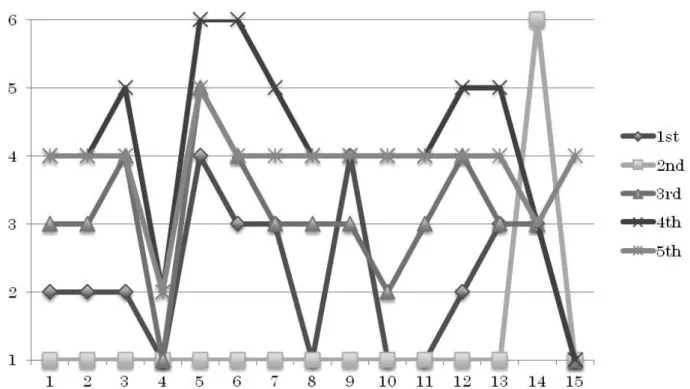A Report on the use of iPads in the University Classroom
著者名(英) Adrian LEIS
journal or
publication title
宮城教育大学紀要
volume 47
page range 215‑223
year 2012
URL http://id.nii.ac.jp/1138/00000231/
1 .Introduction
The use of devices to assist teachers in an English as a foreign language (EFL) classroom is not a recent trend. In the past, items such as blackboards, whiteboards, televisions, and language laboratories have been introduced to give students more opportunities to improve the quality of their learning. In more recent years, items that can be connected to the Internet, such as electronic white boards, computers and tablet computers have been gaining popularity as tools for teaching and learning EFL. Since the iPad was introduced in May 2010, tablet computers have especially been gaining a lot of attention from teachers around the globe.
The use of such touch-screen devices seems to
have brought a lot of advantages to the classroom.
Simpson (2012) explains that the introduction of iPads for students at an American elementary school resulted in an increase in enthusiasm to learn among the students that did not wane, even months after they had been lent to the students. Titlow (2012)
suggests that because of the vast range and high number of applications available to be downloaded to tablet computers, they promote autonomy in those using the devices. In a paper based on the actual use of an iPad as a teaching tool in Foreign Language Activities class in a Japanese elementary school, Sakari, Leis and Suzuki (2012) reported that students’ enjoyment of English increased due to the use of iPads in class. Students showed their increased enthusiasm through comments such as: I understand
*
LEIS Adrian
Abstract
This paper gives a report on changes in university students’ attitudes toward technology as an English teaching tool due to the experience of using iPads in class. Eight students were provided iPads for one university semester, and required to use them as part of their model lessons and class presentations. Students’ feelings towards using such instruments for educational purposes were measured using a 15-item questionnaire, as well as open-ended questions to gain qualitative data. Results show that after one semester, even though the students could see the benefits of using such an instrument for educational purposes, preparing for classes using the iPad was in fact time consuming. Therefore, it was deemed that one semester is not long enough for students to feel confident to use the iPad as a teaching tool, and that they should be provided with such tablet computers earlier in their tertiary education.
Key words: CALL (コンピュータ支援の外国語学習)
Tablet computers (タブレット コンピュータ)
University students (大学生)
English pedagogy (英語教授法)
*
